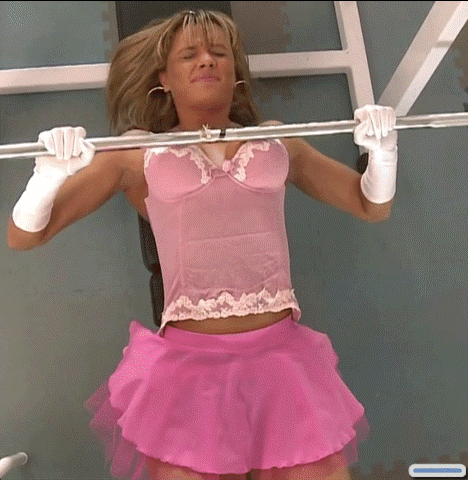Welcome to the Hardcore Husky Forums. Folks who are well-known in Cyberland and not that dumb.
You know how I know your news source is lying?
Comments
-
I can defend the New Deal better than the shill for the GND
-
-
He really is this stupid
Mitch, AOC, and I welcome the vote
-
I don't watch NBC News2001400ex said:
Yes that's my point. What do you think "net zero, rather than zero emissions" means?RaceBannon said:
But you are ok to run shade for CNBC to lie about it.
Its fake
HTH
Obviously you do since linked it. That would make it your news source
People tend to remember the original roll out. 10 years. Blame AOC she did it -
Then why are you commenting on it? This is CNBC, which is conservative. And your news source says the same thing. Not to mention your shitposts trying to show that the GND says it wants 100% renewable.RaceBannon said:
I don't watch NBC News2001400ex said:
Yes that's my point. What do you think "net zero, rather than zero emissions" means?RaceBannon said:
But you are ok to run shade for CNBC to lie about it.
Its fake
HTH
Obviously you do since linked it. That would make it your news source
People tend to remember the original roll out. 10 years. Blame AOC she did it
Struggling today race? -
Is it wrong that I think DIE!!!! when wtf’ing a Hondo poast?
-
Why am I commenting on a board designed for people to comment on?2001400ex said:
Then why are you commenting on it? This is CNBC, which is conservative. And your news source says the same thing. Not to mention your shitposts trying to show that the GND says it wants 100% renewable.RaceBannon said:
I don't watch NBC News2001400ex said:
Yes that's my point. What do you think "net zero, rather than zero emissions" means?RaceBannon said:
But you are ok to run shade for CNBC to lie about it.
Its fake
HTH
Obviously you do since linked it. That would make it your news source
People tend to remember the original roll out. 10 years. Blame AOC she did it
Struggling today race?
Is this a trick question?
I'm not struggling at all. We all know who is. Badly
The GND launched at 100% renewable. With the planet at stake I'm not willing to compromise on that.
NBC is conservative. As we like to say, no -
It's CNBC idiot. Not NBC.RaceBannon said:
Why am I commenting on a board designed for people to comment on?2001400ex said:
Then why are you commenting on it? This is CNBC, which is conservative. And your news source says the same thing. Not to mention your shitposts trying to show that the GND says it wants 100% renewable.RaceBannon said:
I don't watch NBC News2001400ex said:
Yes that's my point. What do you think "net zero, rather than zero emissions" means?RaceBannon said:
But you are ok to run shade for CNBC to lie about it.
Its fake
HTH
Obviously you do since linked it. That would make it your news source
People tend to remember the original roll out. 10 years. Blame AOC she did it
Struggling today race?
Is this a trick question?
I'm not struggling at all. We all know who is. Badly
The GND launched at 100% renewable. With the planet at stake I'm not willing to compromise on that.
NBC is conservative. As we like to say, no
And no it's not 100% renewable in 10 years. That's just how gullible you are. Your news source says it so you think it's true. -
Too much war imagery.RaceBannon said: -
Literally laughing out loud2001400ex said:
It's CNBC idiot. Not NBC.RaceBannon said:
Why am I commenting on a board designed for people to comment on?2001400ex said:
Then why are you commenting on it? This is CNBC, which is conservative. And your news source says the same thing. Not to mention your shitposts trying to show that the GND says it wants 100% renewable.RaceBannon said:
I don't watch NBC News2001400ex said:
Yes that's my point. What do you think "net zero, rather than zero emissions" means?RaceBannon said:
But you are ok to run shade for CNBC to lie about it.
Its fake
HTH
Obviously you do since linked it. That would make it your news source
People tend to remember the original roll out. 10 years. Blame AOC she did it
Struggling today race?
Is this a trick question?
I'm not struggling at all. We all know who is. Badly
The GND launched at 100% renewable. With the planet at stake I'm not willing to compromise on that.
NBC is conservative. As we like to say, no
And no it's not 100% renewable in 10 years. That's just how gullible you are. Your news source says it so you think it's true.
Harvey Ardman
Harvey Ardman, 50 years a journalist, author of 22 books. (1961-present)
Answered Mar 28, 2017 · Author has 11.1k answers and 5.6m answer views
NBC is one of the big three major broadcast networks (the other two are ABC and CBS). It offers a wide variety of entertainment, talk shows and hard news programs. CNBC is its cable business channel and MSNBC is its cable all-talk news outlet, focusing on political news with a distinct liberal slant.




